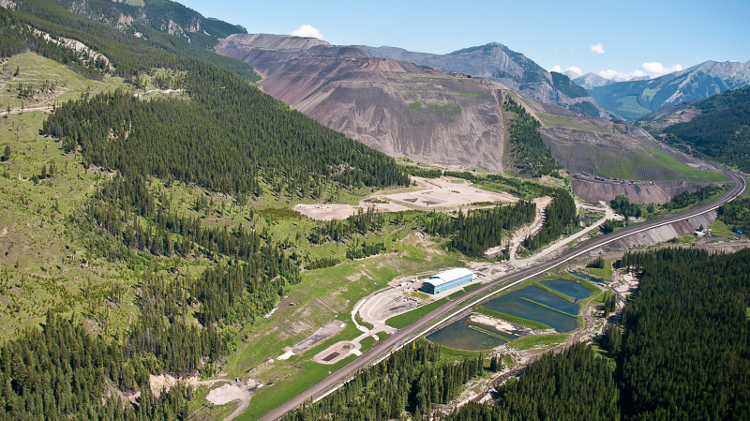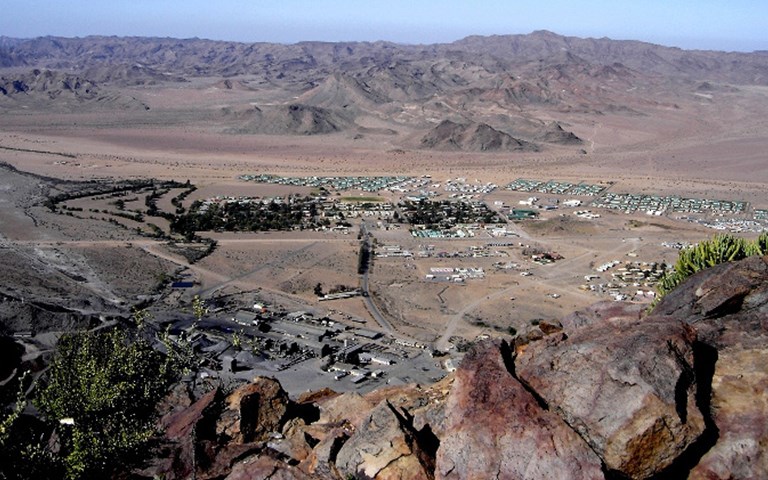Trevali finalized acquisitions of Rosh Pinah zinc mine (pictured) and others in an effort to capitalize on the highest zinc prices in a decade. Courtesy of Trevali Mining Corporation.
Trevali Mining finalized its acquisition of zinc assets from Glencore PLC, including a 90 per cent interest in the Perkoa mine in Burkina Faso and an 80 per cent interest in the Rosh Pinah mine in Namibia, for US$418 million in cash and shares in late August. The recent rise in zinc prices motivated Trevali to complete the transaction before the valuation of the projects became too lofty.
“Our timing was very fortuitous to get [the transaction] done in the first quarter because, as we thought, zinc did take off and looks like it’s continuing to go forward with that strength in the future, which we’re looking forward to,” Steve Stakiw, Trevali’s vice-president of investor relations and corporate communications, told CIM Magazine. The acquisition made Trevali the number eight zinc producer globally.
On August 16, zinc for delivery in three months was selling for US$3,029 per tonne on the London Metal Exchange, besting the previous high mark over the last decade, which was set in October 2007. The culmination of decreasing output from major producers, increased global demand and a shortage of the metal in China led the three-month zinc price to reach its ten-year high.
The miners that will be able to benefit from the prices are the ones that are already in position, which was a major motivator in Trevali’s latest acquisition. There are other, smaller companies that will reap the benefits of the rally as well.
RELATED: Trevali’s Caribou zinc mine given a boost by global zinc supply has tightening as it reached commercial production
Ascendant Resources, the only Canadian pure-play zinc producer other than Trevali, took over the El Mochito mine in Honduras in December 2016 and has been rehabilitating it since. The company expects to be cash flow positive by the end of 2017.
Ascendant president and CEO Chris Buncic said the company hopes to be able to take advantage of the current metal prices. “A lot of junior zinc-focused companies in Canada have developed unfunded projects that won’t actually benefit from strong zinc prices if their projects aren’t completed in time. This is a multi-year rally in my expectation, and we’re set to benefit,” Buncic told CIM Magazine.
Buncic pointed to the several significant zinc mines around the world that were shut down in recent years, including Vedanta Zinc’s Lisheen mine in Ireland and MMG’s Century mine in Australia, as contributing to the current zinc prices. Those two mines, which closed in 2015, reduced annual global output of the metal by cumulatively more than 500,000 tonnes.
In the same year, Glencore, the biggest producer of zinc, reduced its annual zinc output by 450,000 tonnes, causing zinc prices to rise seven per cent in one day.
RELATED: Good fortunes in mining and exploration in 2017 founded on Chinese demand and Canada's good reputation
Zinc mines with comparable outputs have not been opening, so global inventories have been declining over the past several years but significantly so for the past three. While some miners have begun to restart operations at mines that were under care and maintenance and others have begun exploration, it will take many projects getting to production before the market finds balance again.
“Zinc is very cyclical,” said Stakiw, but “the thoughts are that this zinc rally could be stronger for longer.” In terms of supply, Stakiw cited the current lack of increasing supply coming from China, as China’s increased supply was a major factor in stabilizing zinc prices after the metal’s last rally in 2007, as well as that there are no “shovel ready” tier one mines that can start production in the next three to five years as reasons why this zinc cycle could last longer.
Stakiw said consumer demand for zinc has increased two to four per cent annually in recent years, driven by global infrastructure development and expanding markets for consumer goods such as cars and appliances. In order to satisfy such increases, argued Stakiw, approximately one new tier one mine would have to start production each year. If this rate of increase is maintained, zinc prices could continue to rise over the next few years.
Scotiabank’s analyst Rory Johnston affirmed this in the Scotiabank Commodity Price Index, published in late August. “Zinc’s outlook remains fundamentally strong, even though prices may temporarily fall back in sympathy with the broader metals market,” wrote Johnston.
China, the largest consumer and producer of zinc, implemented several new environmental regulations that impacted the country’s ability to produce the metal, further bolstering zinc prices. More regulations in China will be implemented this winter.




